Big Bend National Park in Texas is one of the least visited parks in the United States. How can that be? This can be difficult to comprehend for those who have spent time in the area.
Whether you’re searching for a new environment to explore or incredible star gazing opportunities, Big Bend is the place to do it. Its remote location provides access to be immersed in nature and escape the concrete jungle of urban life. The untouched landscape gives way to rare animal sightings, diverse plants and the opportunity to be connected to nature.
This area is a unique habitat for animals and plant species alike. According to the National Park Service, the park is home to about 1,200 plants and 75 different mammal species. Getting to the area does take some work, as the nearest airport in El Paso is about five hours north. Although this could be seen as an obstacle, the reward of being in a place so desolate and far from the impacts of human life is incomparable.
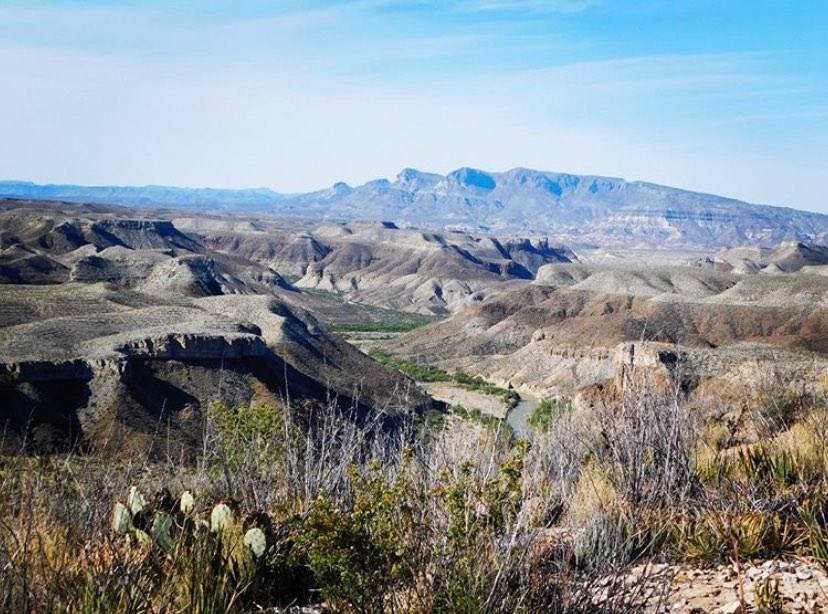
Photo by Adam Benway
At first look, the desert appears harsh as red rock extends into the blue sky looming above the cottonwood trees and bushes that populate the terrain. The landscape is other worldly, as if a space craft could land at any moment. From a distance, the rock structures are all that is noticeable, creating unusual shapes and canyons that dip deep below the surface and create space for water to flow. Upon closer look, the eye can find the subtle little elements that make up the desert floor, including the cryptobiotic soil that is the life force of the plants that inhabit the space. These micro-organism takes thousands of years to grow and they provide nutrients to all of the plants.
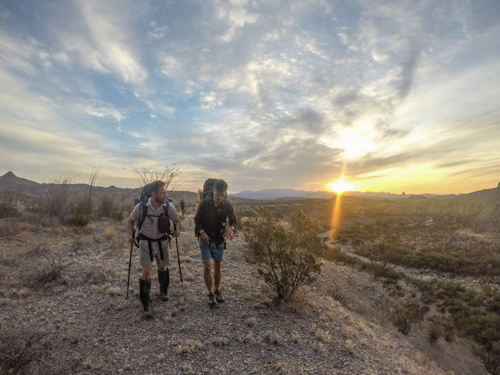
Outward Bound students backpack through Big Bend.
The Chihuahuan desert makes up the park but spans across the border and well into Mexico. The temperature can vary greatly at any time of year. Like any desert environment, the heat of the summer is dry but the land tends to cool significantly overnight. The area gets very little rainfall and the Rio Grande River acts as the main water source.
Big Bend is accredited by the International Dark Sky Association and is said to be one of the most amazing star gazing spots. Its remote location and vast wilderness of about 1,252 square miles with very little human impact means that light pollution is almost nonexistent, making clear night skies the ideal time to star gaze and maybe even catch a shooting star.
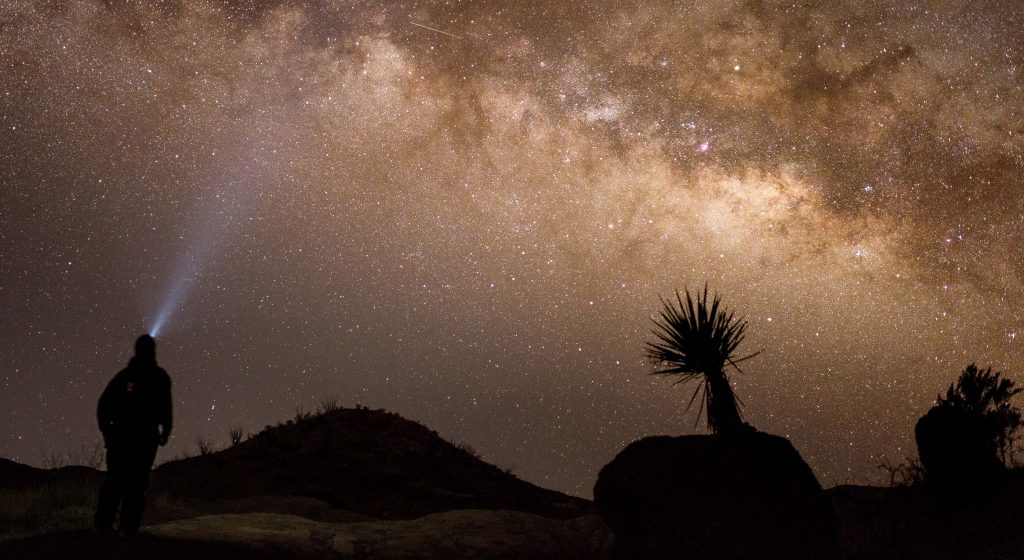
Photo shows student on a Texas Big Bend Desert Backpacking course admiring the endless night sky in the Big Bend National Park.
Due to the fact that it takes some time to get to Big Bend, it has a more desolate feel than other parks of its size. Few people travel deeply within the wilderness and prefer to embark on shorter, less remote day hikes. The Santa Elena Canyon is a popular destination and one that draws people from all over the world.
Exploring Big Bend, Texas with Outward Bound
Outward Bound in Minnesota, which predominately runs courses in Minnesota and the Boundary Waters, re-opened the Texas base a little over three years ago. This course area provides a unique opportunity for backpacking and rafting courses, while also serving as a training area for Instructors. The Minnesota base runs courses in canoeing, backpacking, sea kayaking and dog sledding, all along the border of Canada. The opportunity to experience both and jump to the southern border of the country in Texas is unique—an experience that’s offered by the Boundary Waters Dog Sledding & Texas Big Bend Leadership Semester.
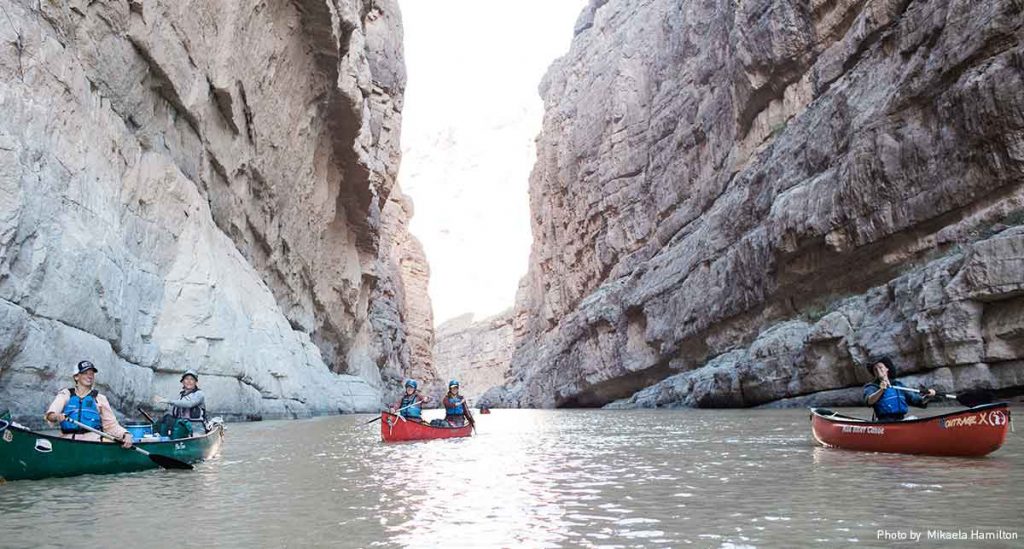
The Texas base runs courses from October until April each year. Students embark on backpacking trips that take them to areas of the park that few have seen before, as they work together to chart their own course and make their way down new and rarely seen trails. The itineraries focus mainly on moving from one water course to the next while traveling through canyons and across the sandy plains. Rafting on the Rio Grande is an opportunity few have, and this provides the space for a crew to learn new skills while spending nights on the shore of the river. They fall asleep to the sound of running water with amazing star gazing opportunities overhead.
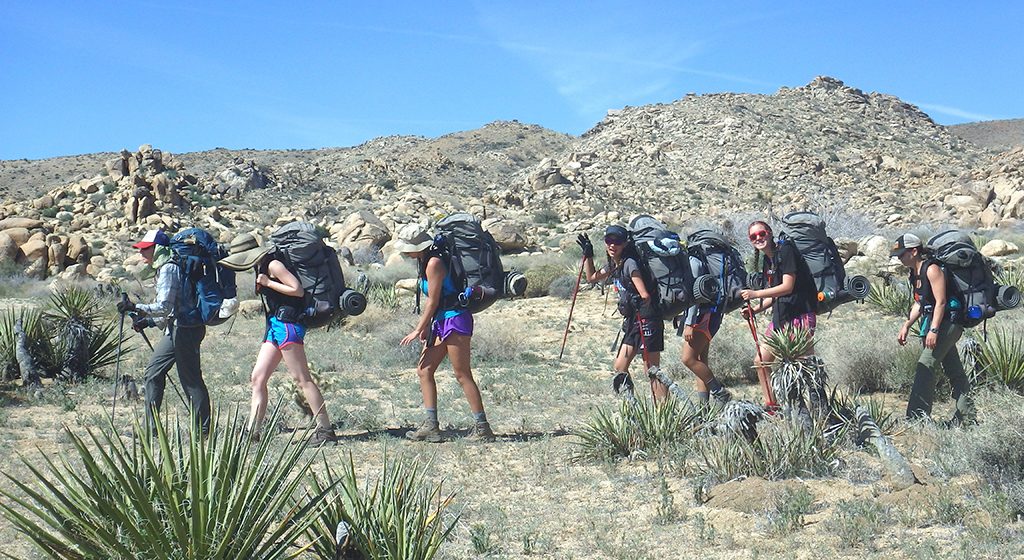
Photo shows Outward Bound students backpacking in Big Bend, Texas. By Emma Rapp.
Rachael Pace, a seasoned Instructor who works in the Texas course area, speaks fondly of her time in Big Bend. She has always loved the desert. She says, “The Santa Elena Canyon on the Rio Grande is one of my favorite places in the world. With soaring cliffs so close to the river, you feel very remote. You feel the solitude as you float down this special canyon. It’s like a different world.”
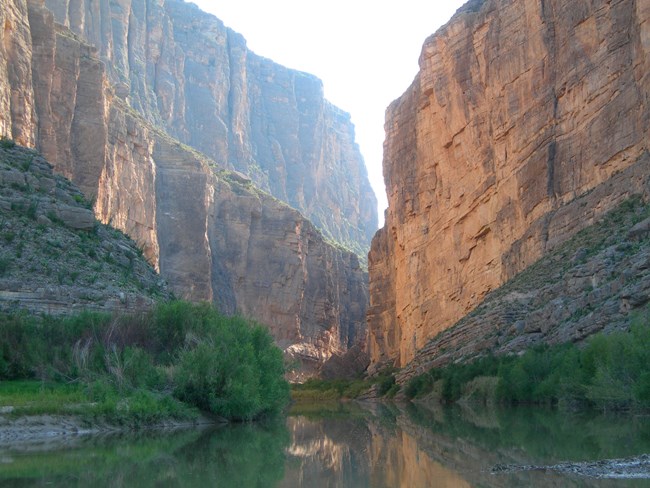
Photo shows Santa Elena Canyon in Big Bend, Texas, courtesy of the National Park Service: nps.gov
So what are you waiting for? Join us for an adventure in Big Bend, Texas.
About the Author
Sophie MacMillan is the media intern for the Southwest Program of the Colorado Outward Bound School. She graduated from The University of Vermont with a degree in Photojournalism. Since coming to the Southwest, she’s enjoyed exploring the incredible new environment through hiking, rafting and climbing with a film camera in hand.




